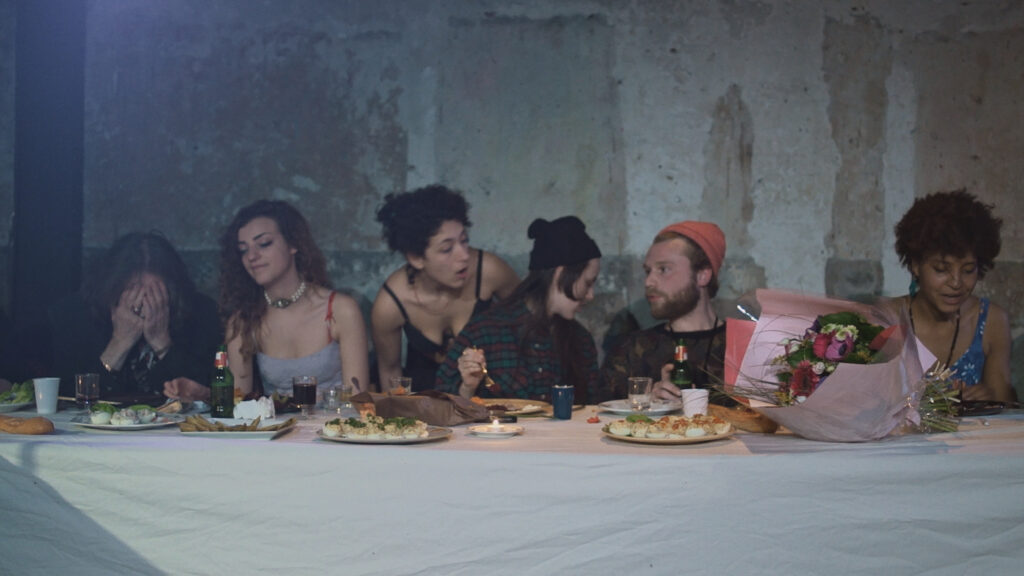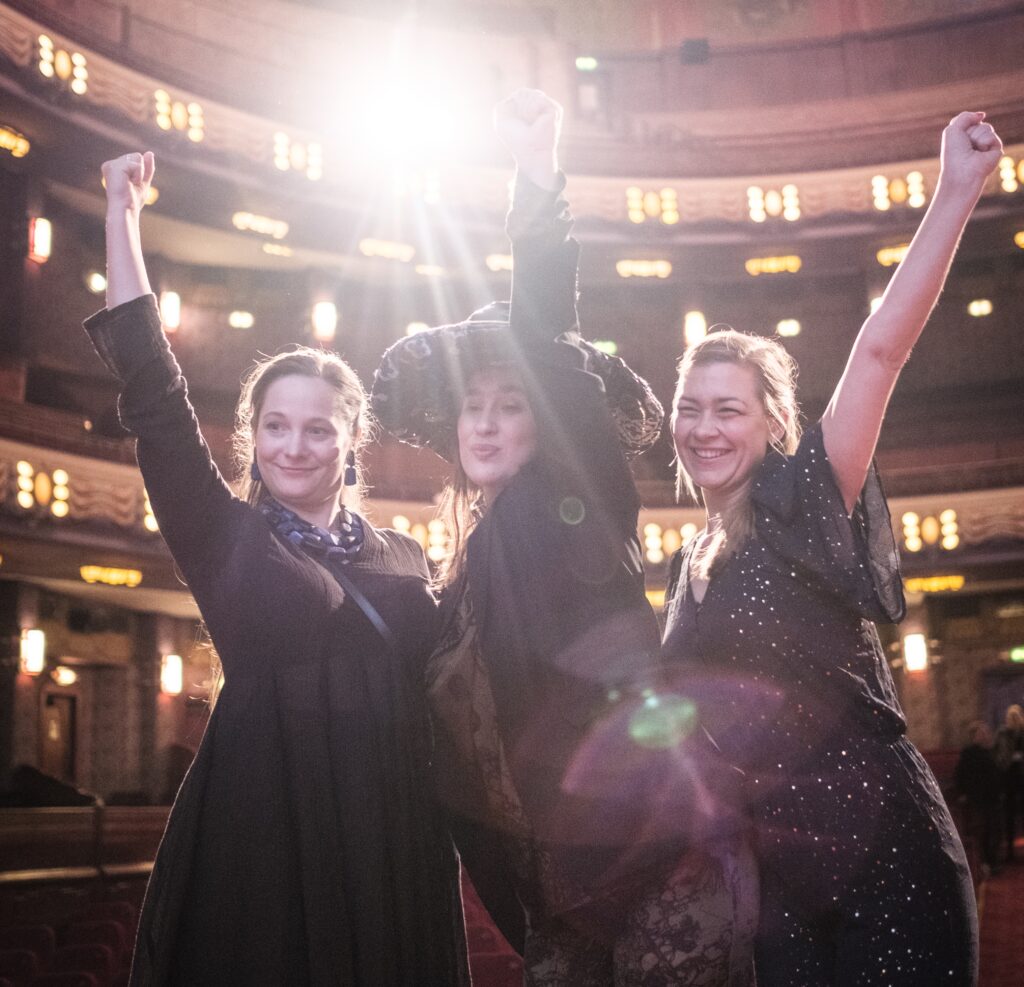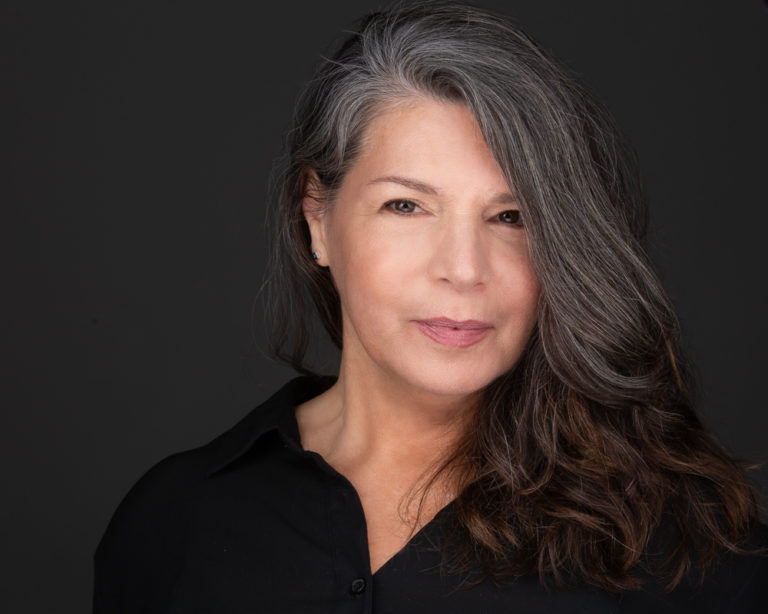But if you no longer fear fire, you can ignite your own flame instead.
Ever since she was a little girl growing up in the countryside of Denmark, filmmaker Lea Glob has chosen the apparatus of a camera to help her interpret and understand the world around her. French-Polish painter Apolonia Sokol has been documented by a camera her entire life, her every move and gesture captured for posterity by her parents even as she was being conceived. In their 20s, each of these women was starting out on her journey to become a fully realized artist. And then their lives collided – Lea behind her camera lens and Apolonia in front of it, a sisterhood of solidarity, of sorts, for the adventures that lay ahead for each of them.
Apolonia, Apolonia is a cinematic work resulting from a decade and a half of their collaboration in making one of the most extraordinary documentary portraits in recent memory. The 116-minute film is about a lot of things. But what it’s pre-eminently about is what it feels like to be a female artist in this era. At its world premiere at IDFA 2022 this past November, it won Best Film in the International Feature Competition.
Shortly after the new year began, I had a chance to converse with Lea and Apolonia together on a Berlin-Copenhagen-Paris connection via Zoom. I don’t normally get to engage with a film’s protagonist, but in this case, the woman at the center of Lea’s film is quite remarkable, as is the relationship she has with the woman who documented her life for 13 years. Their relationship surpasses any kind of transactional negotiation as is common and necessary in much of modern documentary portraiture. Instead, we witness two women that become a beautiful rotating reflecting pool for one another as they mature and struggle to become the women they are today.
Pamela Cohn (PC): I’d like to start the conversation with the writing of this film, particularly your spoken commentary written during the edit, Lea, where you reflect on the state of Apolonia, and, in turn, your own feelings about what’s happened internally to you during the thirteen years you filmed her. It’s difficult to write succinct texts about transformations or “becomings” without sounding prosaic but here, it adds an even deeper layer to the pathos of these stories that intertwine.
Lea Glob (LG): Part of my artistic practice is, on the one hand, intuitive, and on the other, being able to intellectually figure out how everything is going to fit together. What I always appreciate is an outside look and that’s what Apolonia has offered me, this other look at what I’m making. I’ve worked for years with this deep need to understand something.
In terms of the writing, I should also give credit to Apolonia because she was instrumental in looking at edits and reacting to things that felt, to her, untrue, or contained too much of a privileged white Danish person’s interpretation. It was important to her not to reproduce these micro-aggressions from that place of privilege in the film’s language. I would use words that had a very practical use for the dramaturgy, but she would carefully critique that and that made the film so much stronger in the end. Credit must be given also to one of the editors – and the person who became my husband – Andreas Bøggild Monies. [Editor Thor Oschsner also worked on earlier cuts.] Andreas was writing with me over the six months we were in the edit suite where we really focused on the final narration.
PC: What was it about the “motif” of Apolonia, as you describe it in the film, that kept you returning for over a decade to document her life? Initially, she was your portrait subject for your film school graduation project.
Apolonia Sokol (AS): (to Lea) So what did you think you were doing? [laughter]
LG: Much of what I’ve created has happened out of necessity; I did what I had to do in order to obtain some deeper wisdom about my life. This meant using the camera as the medium to understand the world, how to apply that knowledge gained through the lens into a kind of wisdom. In making this particular film, there were many times I received this sought-after wisdom. Retrospectively, I can say that Apolonia’s world gave me access to that. As far as the commitment, on the one hand, it was the geeky commitment of that of a filmmaker. The student film Apolonia and I did together wasn’t good enough and I wanted to do a better portrait of her.
AS: I remember you made me look at the camera for two minutes without talking – this happened several times. It’s one of the first scenes in the film, that first time you asked me to do that, but I did have to do that quite often. Maybe it was to make me forget the camera. But also, perhaps to make me not be able to live without the camera.

PC: Did that ever-present camera somehow enhance the experiences you were living through, Apolonia? Even not knowing how those experiences would be portrayed within the larger narrative?
AS: As you see in the film, my parents filmed themselves while making me – which is a questionable gesture. Some might find that extremely romantic or artistic in a way, but it was actually depriving my person from having a private life from my very conception. I don’t think we’re supposed to see our own conception. I was born in front of a camera and have spent most of my life in front of the camera. I thought it was a good idea to give Lea these images, to trust her with them.
Retrospectively, that was quite bold because we didn’t know one another. There were so many things happening at the theatre [Lavoir Moderne Parisien in Paris where Apolonia was raised]. Anyone who had an idea could use this theatre and this community to make something. Lea was one of these people and the agreement was that she could film as much and as long as she wanted. No one would ask to see footage or intrude in any way on what she was making. Everybody there worked that way. Over the years, many would make stuff that was fine, or wasn’t very good, or they disappeared altogether. But Lea kept showing up to film. Once I was in LA and I remember panicking because Lea’s camera was there, but she was not behind it. Do you remember this, Lea?
LG: Yes, it’s very strong – I remember this moment. There’s one scene from this in the film with the red light in Hollywood. It was the making of a video, so other cameras were there.
AS: Your camera changed and evolved during the making of the film as you were changing; our relationship changed to that of almost family, not quite friends – a very strange relationship, I would say – stronger, really, than friendship. I decided to give everything to this person, to trust her and to look to her camera lens for acknowledgement. Whenever I was going through these big dramatic events in my life, I would look to Lea’s camera, sort of like a confidant. She never told me what to do or where to be. Now that the film is done, we have to learn to be together to support the film. It’s like a whole new relationship. When filming me stopped, we had to meet each other again, just the two of us without the camera, the next evolution.

PC: Thematically, the film is full of literal births and figurative re-births. There is also this constancy of expulsion, sudden ejections from a given circumstance, resulting in radical transformations for both of you. Was there any structure that contained these ideas during the course of filming?
LG: During the making, much of it was just showing up. But yes, at a certain point, we searched for emergent themes, but that took time. For a while, I was blind to this very obvious and evident fact that I was filming this great painter and that the elements of making that kind of art are definitely time-based. Of course, I was always thinking about what this film might encompass, figuring out the scope. Having the time to make it was a part of that. These various female destinies, including my own, changed my whole perspective. As we all get older, our life perspective changes. That kind of perspective helped to write the film. It also indicated to me when we should stop filming.
AS: I think that life took over the narrative of the film, including what was happening in Lea’s life as a female and as an artist. These events are so true and faithful to the reality that was happening to both of us, what happens to so many women in Western European film, where you’re supposed to be free as a woman to do whatever you want.
LG: There was a shift when we attempted to write a one-line premise of the film, like you do in fiction. I’m so much of a craftsperson and so I admire Apolonia’s way of expressing and sharing her knowledge – she’s a great mirror. I thought it was so important for the world of cinema to see and feel this woman, a woman with a rare gift for articulating what is happening around her as it’s happening. She also demands a lot of things of you and can be annoyingly persistent when she thinks it’s important – such as realizing that life is short and you must do your art right, really do the best that you possibly can with what you have because it means something.

Making documentary is so interesting on so many levels: you have the camera in front of your eye and you’re in reality. You constantly need to use your intuition in order to know where to go next. You have to feel things before they happen, to interpret what’s going to happen in five minutes, to be in the best position to capture it. On top of that, you also have to be in an imaginary structure, something that’s not fixed but nonetheless has direction or momentum. I did have some idea what I was doing, I absolutely did. But I also remained flexible enough to constantly adjust. I had a very impulsive subject in Apolonia because she just will go where it’s important to go. But in between these larger events of her life and mine was the opportunity to do more cinematic scenes where things were more fixed. I love making documentary film so much, this respect for reality and what’s happening amidst that reality to build a story. It kind of turns you into a crazy person, a deranged reality you can make a film out of. [laughing]
AS: I decided to completely trust this person with my life for years without seeing any footage at all. During the edit, Lea decided to trust me, in return. As a portrait painter, I try to avoid this culture of extraction and power that one can have towards your subject. My approach is very similar to Lea’s in the way she decided to portray me, including me, in a way, in the actual finishing of her film. That’s a lucky thing to have that control of some part of my own narrative; it’s quite rare in documentary, the arts in general. This makes Lea very contemporary, a maker of her time, even though this project has its own sense of time. After fifteen years, I had to learn to live as a private person again. But our relationship helped transform the film into what it is now when it’s in the hands of audiences.
LG: Apolonia gave me the courage to create with no compromise and I wanted to mirror that very much to the audience. She allows some things that most people probably wouldn’t. I mean, I met two of the great contemporary artists of our time in Apolonia and Oksana Shachko! I’m just happy that I was there with the camera to share and archive a part of their lives and that’s strictly due to their incredible generosity. I’m very proud of that and I think the film has a job to do out there in the world.
As many deadlines and pressures as there were – and there were a lot – I was also lucky to have consultants, producers, commissioning editors, professionals that were super flexible and supportive as to what was happening. At any point over the years, someone could have taken the key and thrown us out, but that didn’t happen. That professional support was everything in order to make a film accessible to a wider public, rather than some niche slot. My entire goal was to get this into the cinemas. Of course, now streaming is everywhere so that might have been a dinosaur way of thinking. But still, it’s a cinematic piece and it’s made for the cinema.
AS: Actually, I do remember there were times when Lea was being asked to compromise. Ultimately, Lea, you made the film you wanted. But there were some moments when the people around you tried to get you to make another film.
LG: Yes, for sure there was a lot of fighting to make this film as I intended. You’re right. In the edit, you sit next to someone who is doing the work so if there’s a compromise in that collaboration, the film ends up being a compromise. And there was so much going on during the making of it – taking care of my health, raising a young family, doing everything with no money. We went through a lot. In a way, I could say that those struggles definitely made it a better film. I think what Apolonia is referring to, and what often happens, is that some consensus needs to be reached, a sort of recipe that should be followed. As the director, you should be on board with it all, “get with the program”. But again, having Apolonia beside me was so key because she engages fully; she stood up for me when we were straying away from what I wanted to make.

PC: For me, that sisterhood or comradeship or whatever you want to call it is just one of many of the film’s strengths, but an essential one. There is a bid for intimacy in the making of a documentary with one’s subject or protagonist. But it is quite rare to carry that relationship into the editing and finishing. You also took time in the film, Lea, to include your relationship with the camera, a constant companion to you since you were a girl. Picking up a camera set you free.
LG: That is a relationship, yes!
AS: Lea often would joke about the idea that if you have a child and you want him or her to stay away from drugs, you should just give them a camera to ensure a geeky, trouble-free child. [laughter] But it isn’t the camera that makes great art. It’s this mysterious thing that is called art. Lea and I met at a time when we were both trying to do something with our lives. We felt that nothing could stop us. At the time, I wanted a studio way more than I wanted a place to live. Lea had to film no matter what. We both had that resilience and perseverance to do whatever it took.
Currently, my job is to instruct art students in their 20s. I teach at the academy at ésam Caen / Cherbourg in Normandy, and I have assistants who come from different schools to use my studio space in Paris for their own work. They’re the same age I was when we started making this film. They’re so vulnerable, but they want so much. I only take people who identify as women who belong to a cultural minority and who are politically engaged. Everybody’s queer and we constantly have these discussions that are similar to those we used to have in the theatre. It’s a totally different atmosphere than Beaux-Arts in Paris where I went to school with very privileged students – really not the same crowd. It’s so precious for me to be with them, to support their language, their revolution, everything that they do. When they see this film about my life, they find it really inspiring and hopeful. They’re really moved by it.

Pamela Cohn is a Berlin-based writer, film & video curator and narrative story consultant. She’s the author of Lucid Dreaming: Conversations with 29 Filmmakers (OR Books, New York & London, 2020), and producer and host of The Lucid Dreaming Podcast: Conversations on Cinema, Art & Moving Image. http://www.pamelacohn.com/
